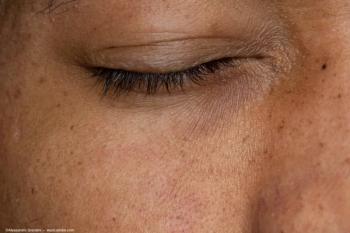
Ashvattha reports positive phase 2 data for migaldendranib in retinal diseases
Key Takeaways
- Migaldendranib (MGB) demonstrated a 5.0-fold decrease in anti-VEGF treatment burden for wet AMD and DME participants.
- Bilateral treatment effects were observed, with significant reductions in fellow eye IVT injections for both conditions.
Ashvattha Therapeutics reveals promising phase 2 results for migaldendranib, showcasing significant improvements in retinal disease treatment and reduced injection burden.
Ashvattha Therapeutics recently announced positive interim phase 2 results for migaldendranib (MGB).1 MGB is described as a novel subcutaneously administered nanomedicine for the treatment of retinal vascular diseases.
The safety and efficacy of subcutaneous (subQ) MGB were evaluated in a phase 2 chronic dosing, open-label study in 27 participants. The participants, 16 of whom had wet age-related macular degeneration (AMD) and 11 of whom had diabetic macular edema (DME), had all previously been treated with anti-VEGF intravitreal injections (IVT) and met responder criteria.
MGB is a VEGF receptor tyrosine kinase inhibitor delivered via a hydroxyl dendrimer platform, the company said in a press release. “SubQ-administered MGB selectively targets activated cells in the retina, reducing VEGF expression and fluid production in both eyes simultaneously,” the press release said.
Participants received a single anti-VEGF IVT and subQ MGB at baseline, followed by subQ MGB every 2 or 4 weeks for 40 weeks. An interim analysis focused on 24-week data from 8 wet AMD participants and 6 DME participants.
Ashvattha shared the company’s new data from participants who completed 24 weeks of treatment in a poster presented at the 2025 Association for Research in Vision and Ophthalmology (ARVO) annual meeting held May 4 to 8 in Salt Lake City, Utah.
These data included the following1:
- A 79.9% reduction in participants with wet AMD and an 80% reduction in those with DME compared with the 24 weeks prior to day 1. These results represent a 5.0-fold decrease in anti-VEGF treatment burden for both indications.
- A bilateral treatment effect with 66.7% reduction in fellow eye IVT injections for patients with wet AMD and 85.5% reduction for those with DME.
- From baseline to week 24, the mean best corrected visual acuity improved by 3 letters in the study eye of participants with wet AMD and improved by 4.5 letters in those with DME.
- A mean central subfield thickness improvement of 45.5 µm in patients with wet AMD and an improvement of 69.1 µm in those with DME.
- No serious adverse events or ocular adverse events related to MGB were reported. Injection site reactions were reported in 5 participants (3 with wet AMD and 2 with DME), with only 26 total reactions across the 302 total subcutaneous injections.
Reference
Ashvattha Therapeutics to present positive phase 2 results for subcutaneous migaldendranib in retinal vascular disease at ARVO. News release. Ashvattha Therapeutics. May 7, 2025. Accessed May 15, 2025. https://www.globenewswire.com/news-release/2025/05/07/3076720/0/en/Ashvattha-Therapeutics-to-Present-Positive-Phase-2-Results-for-Subcutaneous-Migaldendranib-in-Retinal-Vascular-Disease-at-ARVO.html
Newsletter
Don’t miss out—get Ophthalmology Times updates on the latest clinical advancements and expert interviews, straight to your inbox.


















































.png)


